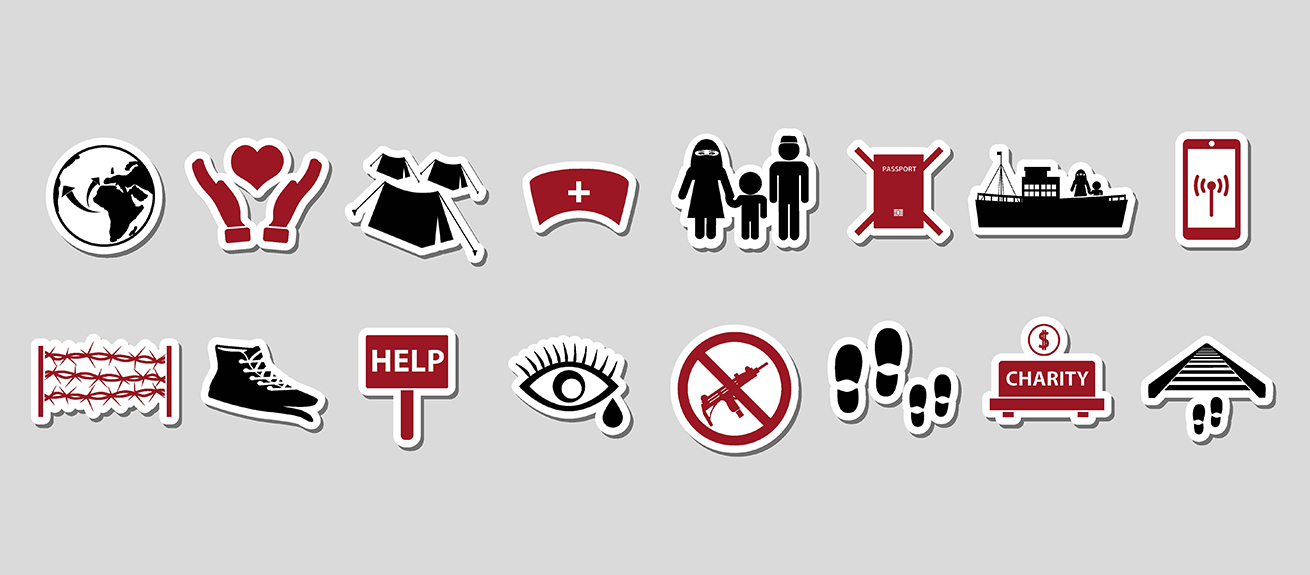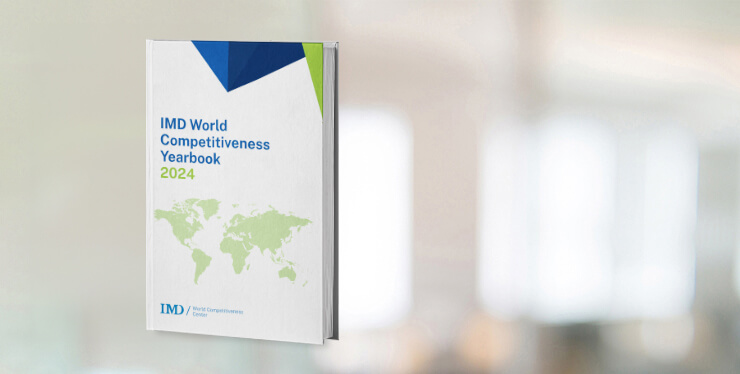| In 2014 the International Committee of the Red Cross (ICRC) launched the Global Partnerships for Humanitarian Impact and Innovation (GPHI2) to promote the development of innovative solutions to humanitarian challenges. The objective of the initiative has been toharness the creative capacity, skills and networks of ICRC partners to address the needs of conflict affected communities. This has led the ICRC to expand its collaboration with the likes of the EPFL, UNOSAT, Philips, ABB and social entrepreneurs in India.
In March 2016, ICRC hosted its second GPHI2 event at IMD, this time focused on Health in Fragile Environments. The event gathered more than 250 participants from the corporate, academic and humanitarian sectors, including representatives of over a dozen different Red Cross and Red Crescent National Societies. It served as a platform for different sectors to understand each other’s perspective and to generate momentum around existing and new leads for cross-sector collaboration. |
Health in fragile environments as a priority
The generally protracted nature of armed conflict and violence, as well as the fact that conflicts are increasingly concentrated in urban areas, is causing a system-wide breakdown of infrastructure and public services in affected countries, reversing previous development gains and highlighting the often artificial humanitarian/development divide. The proliferation of conflict-driven crises is forcing ICRC to reassess the way it works in order to meet the needs of affected populations. The launch of the GPHI2 was a manifestation of this.
Health is one of the sectors where these challenges are most apparent. Recent studies show that over half of preventable maternal deaths and deaths in children under five occur in fragile settings of conflict, displacement and natural disasters. This is part of what has motivated ICRC to focus this year’s GPHI2 on Health in Fragile Environments.
Interestingly, the health sector is also rife with examples and opportunities for impactful cross-sector collaboration and innovation. Innovation is used here in a broader sense to encompass not only cutting-edge technology but also the delivery of more services with fewer resources and in novel ways to areas with limited transportation, water, energy and health infrastructures. The solutions pursued must also be feasible and sustainable in the medium to long term and easily adjustable.
Fragility and health as catalysts for collaboration
Fragility can be defined by the presence of weak institutions, a high level of violence and a sense of insecurity within the population. Fragility and risk are at the heart of the work of the ICRC. Yet, with the globalization of vulnerabilities, fragility is no longer just a problem for humanitarians. Businesses and governments all over the world also need to think about how to better address fragility given the international externalities of these crises.
At the same time, the protracted nature of current crises and the long-term solutions they require demand that humanitarian actors shift their emergency mindset to one that focuses on scalable and sustainable solutions. In that sense, fragility and risk provide a common agenda and a common language for humanitarian and corporate actors.
Health challenges, such as the rise of non-communicable diseases (NCDs) and the persistence of communicable ones, affect all sectors and levels of society. Their impact goes beyond the tragic human costs. The predicted cumulative output loss attributable to NCDs alone over the next two decades is US$ 47 trillion.1 Given their scope and far-reaching implications, new thinking, new business models and improved collaboration across sectors are imperative. Here also there needs to be a shift whereby money spent on health is seen as an investment for both social and economic returns. In that sense, although health challenges are daunting, they may also be seen as an opportunity and a catalyst for cross sectoral initiatives.
Ensuring and expanding access to health in fragile environments
Given the widespread use of mobile phones (the network reached 7 billion mobile phones worldwide in 20152), mobile health (m-health) offers the promise of improved coverage and quality of healthcare services by facilitating access to health services via wireless devices such as mobile phones, tablets and sensors. Though there are already many successful projects, particularly related to data collection and e-learning, many factors are hampering the widespread adoption of m-health technologies, including incompatibility between devices from different projects and the different digital legislations of countries that prevent standardized data collection and sharing. Clear progress also needs to be made in terms of better and more effective management and analysis of existing data to design programs.
One of the priorities for organizations such as the ICRC is to identify the specific areas within m-health that offer the highest return on investment in fragile environments before committing resources to skill development. This is a challenge in itself given the speed at which the sector is expanding and the diversity of new solutions being developed.
The broader issue, however, is that m-health is only part of the solution. Advanced technology is available and developing fast, but bringing and adjusting it to fragile environments remains problematic. Furthermore, mobile solutions are important enablers but having trained health professionals and support from government and local communities remain the critical ingredients to strengthen health systems. As such, innovation needs to go beyond the use of new technologies, additionally encompassing new operating models and behavior patterns.
When addressing mother & child healthcare for example, discussions focused on practical challenges such as how to get a pregnant woman to come back for a second consultation or how to ensure trained traditional birth assistants are able to recognize critical signs and know when to refer pregnant women to the health center. Though mobile support was discussed, many of the solutions explored revolved around basic innovations such as social marketing tools and community incentives.
Non-communicable diseases (NCDs) are also a growing problem in fragile and conflict settings. The priority is not necessarily to invent new solutions as many already exist. Innovation is more urgently needed in the delivery of care and access to medicine. Though NCDs have become one of the leading causes of mortality (in 2012, 68% of global deaths were associated with NCDs3), they have not received much attention from most humanitarian actors or donors. Only 1.3% of official development assistance (ODA) financing for health is dedicated to NCDs.4 Of the estimated 9.4 million people worldwide who will likely die from the consequences of hypertension annually, 46% are in Africa,5 partly linked to conflicts and displacement.
NCDs are a long-term chronic issue, which is at odds with the often short-term perspective of humanitarian actors. Up until now the response of humanitarian organizations to NCDs has been limited. But as GPHI2 participants discussed the practical challenges of addressing NCDs, it was noted that each sector had an important role to play. When it comes to increasing access to treatment, pharmaceutical groups have been called upon to make key drugs more affordable. Yet, ensuring access to proper care also requires strengthening health systems in a holistic manner. This means raising awareness about the diseases, improving prevention and building the capacity of health professionals to ensure proper diagnosis, treatment and follow-up. Here, public structures and humanitarian actors have different roles to play. So it seems that a more concerted effort across sectors and innovative business models would offer the best way forward.
Challenges related to enabling people with disabilities in fragile environments were also discussed. According to some estimates, in fragile countries around 15% of the population are disabled and another 15% have to quit their jobs or work part-time to care for disabled family members. Moreover, the cost of excluding people with disabilities from the workforce represents 1%–7% of GDP6 in low- and middle-income countries and considerably more in conflict-affected countries, where the number of disabled people, particularly among civilians, is surging.
In countries where the ICRC operates, physical rehabilitation is provided not only to people injured in conflicts but also to those who have become physically disabled because of a lack of timely treatment or vaccinations in malfunctioning or non-existing healthcare systems. This situation is worsening as increasingly longer-lasting conflicts mean that healthcare infrastructures are destroyed and civilians are displaced for lengthy periods of time without access to doctors and medication. The ICRC is thus increasing its efforts in this area. From January to September 2015 it ran 126 projects in 29 countries. Over 365,000 people benefited from physical rehabilitation services through ICRC-assisted orthopedic centers and rehabilitation facilities – 15% more than in 2014. One-third of the beneficiaries were children and one-fifth were women.
Other topics discussed were: innovative finance as an instrument for scaling up health services (see below), and violence against healthcare providers. The violence issue is of growing concern given the number of recent attacks on health facilities. In countries suffering from armed conflict or violence – from Afghanistan to Syria, Yemen and many more – the crippling long-term effects of direct, recurrent attacks on healthcare staff and facilities further exacerbate the challenge of ensuring people’s access to emergency and basic healthcare. The ICRC documented almost 2,400 attacks against healthcare personnel, facilities, transport and patients by a range of perpetrators in 11 countries between December 2011 and 2014. The wider impact of such attacks is much harder to measure.
Here as well, innovation has a key role to play. In early 2016, ICRC supported the launch of HealthSites, a crowdsourced mapping application, to more efficiently document and share the location of health facilities in fragile environments. It was one of the innovations showcased at the event.
Challenges: Institutional and systemic
While its overarching goal remains to save people’s lives, the ICRC has shifted the focus of its activities over time in response to changing circumstances. Historically, it intervened to treat war-related injuries. Nowadays, it focusses increasingly on treating NCDs to reduce preventable deaths and providing basic social services and general healthcare in countries or regions where health systems have broken down as a result of war or conflict.
Another plight is effective collaboration with governments and local authorities in fragile environments. Building long-lasting relationships and collaboration based on trust and actions is key. Maintaining a neutral position when collaborating with governmental bodies is particularly vital in fragile political settings where the risk of regime change is high and mistrust of governmental authorities often prevails.
Finally, at an operational level, a common problem is adapting innovative technological solutions to the limitations in the field. Several promising pilot projects have been implemented in different countries, but scaling them is arduous because stakeholders (both investors and beneficiaries) are cautious about investing upfront for the long term, and the complexity of operating in large scale is particularly challenging given institutional voids.
Moving forward
Several new forms of collaboration and innovation have emerged in the six months since the event. In the area of biomedical engineering, ICRC is partnering with Philips to provide up-to-date training to technicians operating in remote areas to upgrade technicians’ ability to maintain and repair essential medical equipment given the difficulty of getting spare parts to conflict affected areas. Also in partnership with Philips, and the Swiss TPH, ICRC is testing the use of tablets to improve the management of childhood illness in primary health care settings and the use of electronic devices to improve the measurement of children’s respiratory rate. A first pilot program is underway in Afghanistan and a second one is to be launched in Nigeria before the end of 2016.
In conjunction with ABB, ICRC is testing the use of microgrids to supply its warehouses in Nairobi with more reliable and carbon-efficient sources of energy. ICRC Biomedical engineers working in different contexts are also collecting data on the impact of unreliable electrical sources on the performance of medical equipment (reliability, damage, maintenance, costs, etc.) with the aim of expanding the microgrid solutions to ICRC hospitals and other health infrastructures in 2017.
ICRC has also intensified its activities in response to NCDs. It has started a pilot project in Lebanon in conjunction with Novartis Access aimed at addressing cardio-vascular diseases and diabetes in vulnerable Lebanese and Syrian refugee households. This pilot is in its early stages of development and efforts are also underway to further integrate the management of NCDs in ICRC activities in Pakistan, Crimea, Ukraine and Libya by 2017. In parallel to its field operations, ICRC has joined forces with other actors to further advocate for concerted management of NCDs. Most recently, ICRC’s president attended a high-level event organized by the Danish government, Novo Nordisk and WHO during the UN annual assembly in New York in September 2016 to shed light on the burden of NCDs in fragile environments and on the importance of cross-sector collaboration.
Interestingly, some of the most innovative partnership models have emerged in response to the needs of people with disability. ICRC, as one of the leading providers of affordable prosthetics and orthotics, is launching a Humanitarian Impact Bond (HIB) to finance the scaling up of its services. By aligning the interests of social investors with ICRC objectives, the HIB is expected to allow ICRC to mobilize an estimated CHF 40 million over the next five years, which will allow it to extend its services to an additional 100,000 beneficiaries. The Humanitarian Tech Lab, launched by the ICRC and the EPFL following the first GPHI2 event, is developing the next generation prosthetic foot with the aim of manufacturing one that is affordable for low-income households and that provides a range of motion comparable to that of the most sophisticated products on the market.
Lastly, following the first GPHI2 event at IMD, the ICRC held a Makeathon in Bangalore focused on developing affordable solutions for the daily living needs of people with disabilities. Unlike the collaborative models outlined above, the Makeathon leveraged the creative energy of entrepreneurs along with Bangalore’s rich Innovation Ecosystem. This led ICRC to team up with local NGOs as well as business incubators, accelerators and maker-spaces to enable the development of early prototypes. A removable extension that enables a standard indoor wheelchair to be converted into a three-wheeled long-distance cycle was one of three prototypes showcased at the GPHI2 event. Currently, six proofs of concepts from the Makeathon are in the rapid prototyping phase.
Given these results and the promise of further innovation in the field of health, the ICRC created several new positions dedicated entirely to the pursuit of innovation and cross-sector collaboration. In the same spirit, it also decided to maintain the focus of future GPHI2 events on the topic of Health in Fragile Environments. The next event is scheduled to be held again at IMD in October 2017. Stay tuned!
Note: For a summary of the first GPHI2 event that was hosted by IMD in October 2014, see the two Insights@IMD: “Global Partnerships for Humanitarian Impact and Innovation (1): Nobody Can Do It Alone” and “Global Partnerships for Humanitarian Impact and Innovation (2): Challenges and Opportunities,” both available at www.imd.org/research/publications/Insights-at-IMD.
1 Bloom, D.E. et al. The Global Economic Burden of Noncommunicable Diseases. Geneva: World Economic Forum. 2011.
2 ITU. “ICT facts and figures. The world in 2015.” https://www.itu.int/en/ITU-D/Statistics/Documents/facts/ICTFactsFigures2015.pdf
3 World Health Organization. World Health Statistics 2016. http://www.who.int/gho/publications/world_health_statistics/2016/en/
4 Institute for Health Metrics and Evaluation. Financing Global Health 2015. http://www.healthdata.org/policy-report/financing-global-health-2015-development-assistance-steady-path-new-global-goals
5 World Health Organization Global Health Observatory (GHO) data. http://www.who.int/gho/ncd/risk_factors/blood_pressure_prevalence_text/en/
6 “The economic costs of exclusion and gains of inclusion of people with disabilities.” London: International Centre for Evidence in Disability. July 2014. http://disabilitycentre.lshtm.ac.uk/new-report-economic-costs-exclusion-gains-inclusion-people-disabilities/




